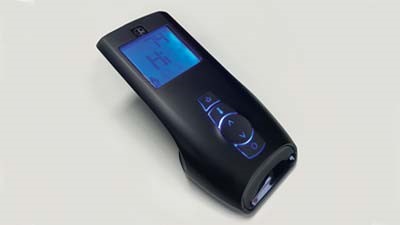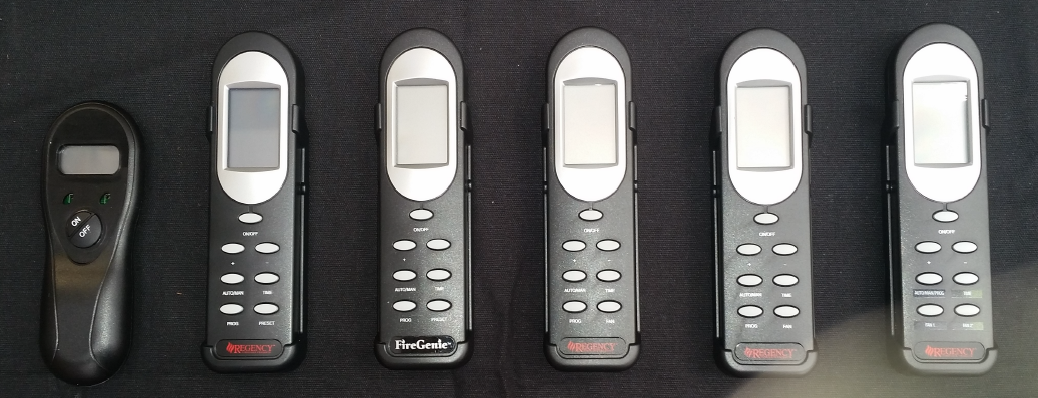Today’s modern gas fireplaces are typically controlled with a remote control meaning starting your gas fireplace is as easy as pressing the ‘on’ button on your remote. Without a remote there will typically be an ignition button on the control panel of the fireplace. See your owner’s manual for specifics about lighting your gas fireplace without a remote control.
How to Re-Light a Pilot Light
Electronic Ignition (Proflame 2)
Re-lighting pilot lights is straightforward on today’s modern gas fireplaces. If you have an electronic ignition unit, using your remote control simply press the ‘on’ button and the pilot will re-ignite within a few seconds, followed by the fireplace a few seconds after that. If your pilot light does not ignite, wait a few seconds and try again.

If your remote looks like this, you have a Proflame 2 ignition system. Unsure? View your owner’s manual.
Non-Electronic Ignition (Millenium System)
If you have a non-electronic ignition fireplace you will need to manually re-ignite the pilot light. Unsure? View your owner’s manual.
Click here for more pilot light video tutorials

If your remote looks like this, you have a Millenium ignition system. Unsure? View your
owner’s manual.
Pilot Light Quick Troubleshooting
If your unit is not hard-wired the batteries that operate the electronic ignition switch (inside the fireplace) may need to be replaced. You will also want to check the batteries in the remote itself. If after replacing the batteries and trying again the pilot does not ignite and you live in a cold climate you could be experiencing a cold start – follow this guide for assistance. If you do not live in a cold climate and your batteries have been replaced you should refer to your owner’s manual for further instructions and/or call your local certified fireplace dealer for a service appointment.
Pilot Light Operation
Pilot lights on electronic ignition units can operate in both Continuous Pilot Ignition (CPI) or Intermittent Pilot Ignition (IPI). Both have benefits and choosing the right one for your fireplace will depend on where you live, how much you use your fireplace, and your personal preference.
If you have non-electronic ignition fireplace it will have a standing pilot light and use a different ignition system. See our video on re-lighting the pilot light with a piezo ignitor at the bottom of this page.
To see whether your unit operates with an electronic ignition system or not please refer to your owner’s manual.
Continuous Pilot Ignition (CPI)
Continuous Pilot Ignition (CPI) means the pilot light remains lit between uses. This is particularly helpful in very cold climates as it helps keep the air around the pilot light warm and minimize any potential cold-start difficulties with the fireplace.
Intermittent Pilot Ignition (IPI)
Intermittent Pilot Ignition (IPI) mode means that the pilot light will light and extinguish each time the unit is used, the ignition system will first ignite the pilot light before opening the gas valve to the main burner and igniting the fireplace. A benefit of IPI mode is that it is more cost effective, efficient and environmentally friendly.